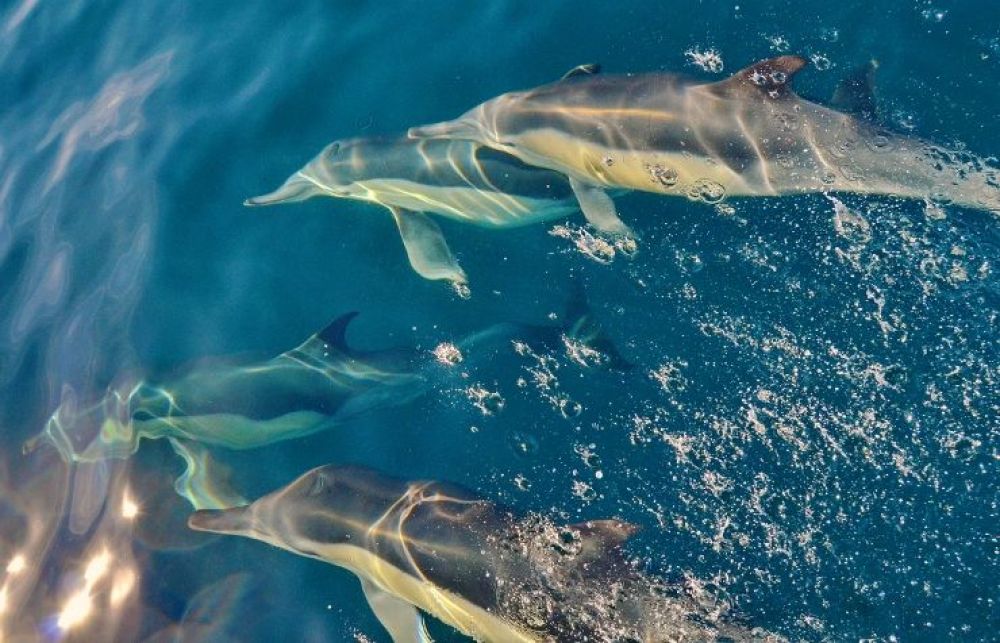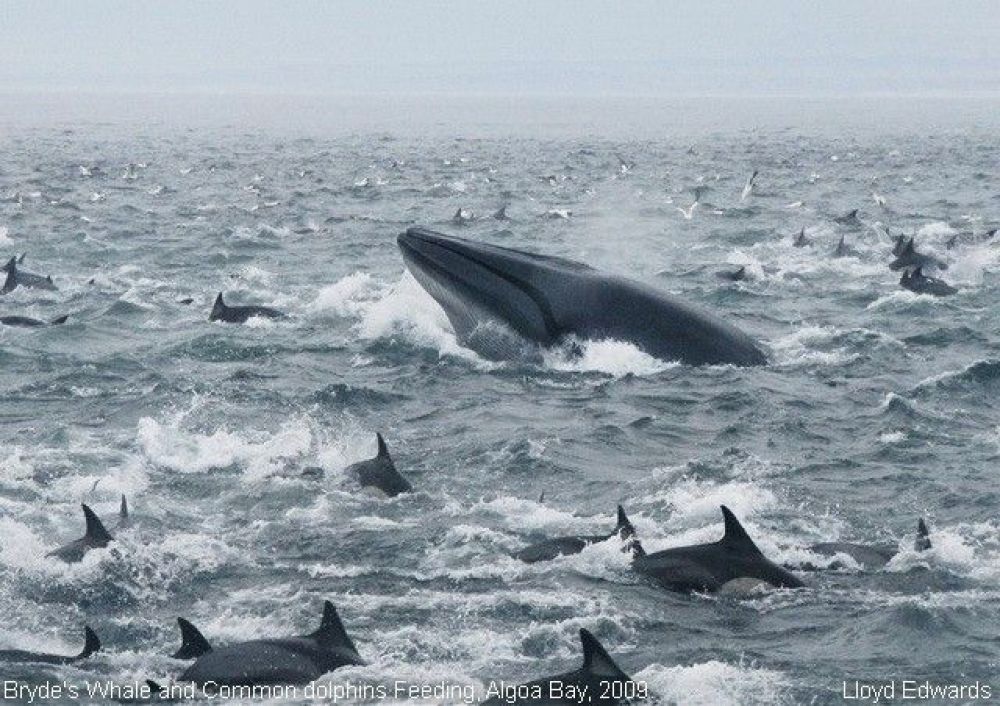Common Dolphin (Delphinus capensis)
Enquire / BookCommon Dolphins are the most widespread and abundant of all the dolphin species, and were the most frequently represented in the art and literature of ancient Greece and Rome, hence the name. Scientists have recently discovered the possibility of three sub-species- the short-beaked, the long-beaked and the Arabian common dolphin (only found in the Red Sea and Indian Ocean). Along the shores of South Africa we encounter both the long-beaked and short-beaked of this species.Even though common dolphins appear able to weather the pressures of death from pollution, commercial fishing and hunting, a population in the Black Sea was almost eradicated by the mid-1960's when up to 120,000 a year were being killed. Hunting of these dolphins has been banned in most countries across the globe and the population off the coast of South Africa is thought to be 15,000-20,000 strong.
Common dolphins average about 2 metres in length and 80kg in weight, so they are a relatively medium-sized dolphin.They are known for their hourglass, or criss-cross, colouration- they are very dark grey on top, white below, with yellowish and then light grey patterns on their flanks, although there is regional variety with each pod having slightly different colourings. These dolphins are usually seen in huge boisterous groups of hundreds, or even thousands, and love riding the bow waves of boats and breaching out of the water at speed, as they are incredibly energetic. They can dive up to 280 metres and hold their breath for up to 8 minutes. Long-beaked common dolphins are often found in shallow, warm coastal waters, and short-beaked common dolphins are more common along shelf edges and in areas with sharp bottom relief such as seamounts.
Found in pods of up to 2,000, these group hunters are highly efficient at capturing small shoaling fish such as anchovies, pilchards and krill. Swimming at speeds of up to 60km/h they hunt down their prey and encircle them driving the shoal towards the surface and continuously tightening the circle around them. This baitball often creates a feeding frenzy with penguins, sharks, seabirds and whales all tucking in to the feast.
The common dolphin has a high rate of reproduction with females reaching sexual maturity anywhere between two and seven years, and males reaching maturity between three and twelve years. Breeding is more common in the Spring/Autumn months and the females give birth 10-11 months later, breeding every 1-3 years. Newborns can reach one metre in length and 10kg in weight, often weaning for up to 19 months. Common dolphins have an average lifespan of 35 years.




















